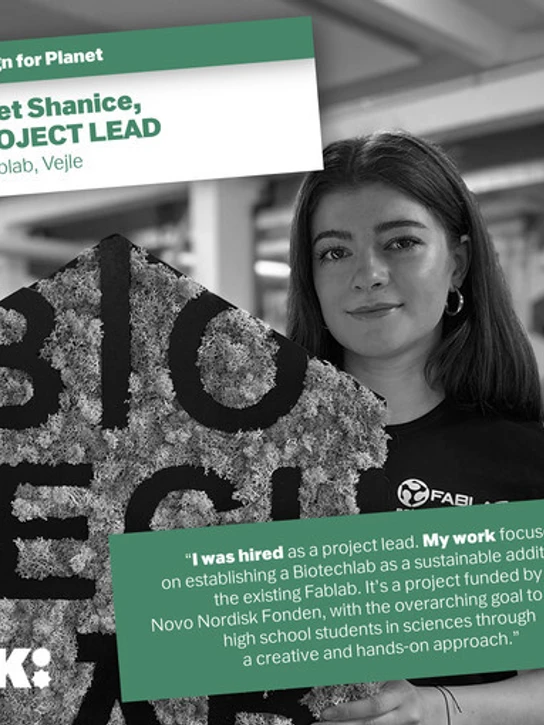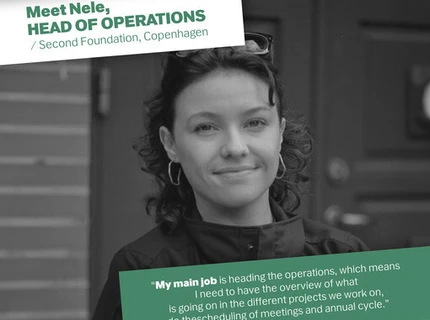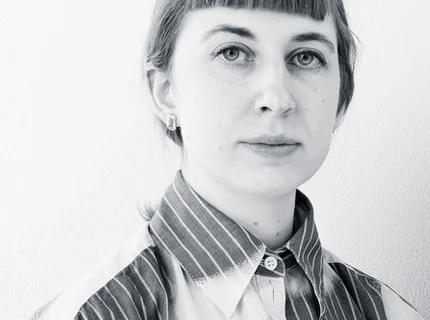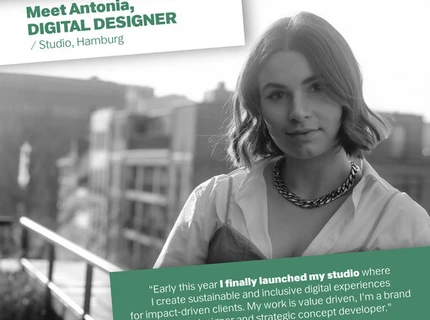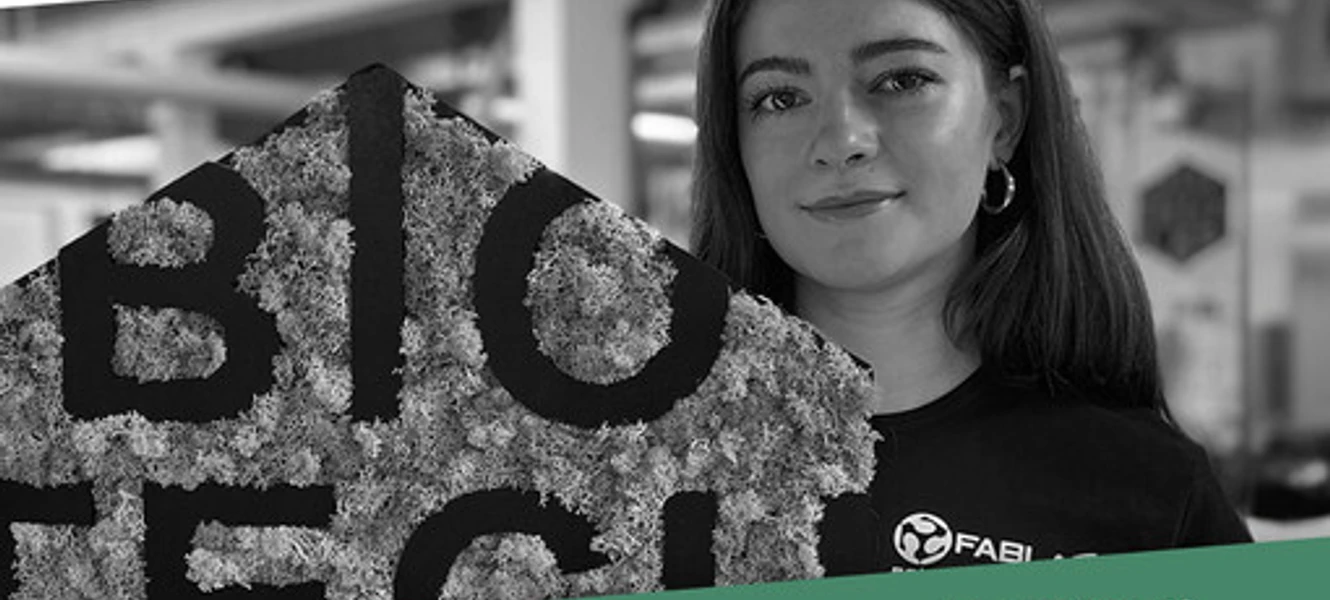
Meet Design for Planet alumnus Shanice Otersen
Tell us a bit about yourself!
I’m originally from Bremen/ Germany but have been studying in Denmark both for my bachelor's and master's degree. I studied fashion design and business at VIA Design in Herning and subsequently attended the Design for Planet master's programme at Design School Kolding with a focus on textiles. During my studies I became very interested in alternative materials and bio design and worked a lot with those topics in the different courses.
Where do you work? What is your role and what are your tasks?
Currently I’m working as part of the Fablab at Spinderihallerne in Vejle where I was hired as a project lead. My work focuses on establishing a Biotechlab as a sustainable addition to the existing Fablab. It’s a project funded by Novo Nordisk Fonden, with the overarching goal to interest high school students in sciences through a creative and hands-on approach. At the moment, we’re mainly collaborating with 3 local high schools: Rosborg Gymnasium and HF, Rødkilde Gymnasium and Vejle Teknisk Gymnasium. We want to encourage the students to use their curiosity when engaging in scientific projects. In practice that, among other things, consists of teaching workshops on how to make vegan leather and bioplastics, how to grow mushrooms and mycelium material, and giving presentations on the topic of bio design. The big question we want to ask is “Can we grow almost anything?” My core tasks as project lead involve designing the lab, creating and running workshops, building connections to the schools and the students and planning out the project, as well as reporting and a bit of social media.
What is the value of a Planet Designer?
"I wanted to hire a skilled designer, because of their ability to explore without having fixed answers. Someone who can join us in the goal of developing Fablab Spinderihallerne in a sustainable direction. Someone who is able to explore together with students in a design process and work with an open mindset. By hiring a Planet designer, we get someone who is knowledgeable about sustainability and the Planet, which means that when they engage in experiments and work with students, they act on behalf of the planet. This gives us the chance to teach a new generation about planet centric design and methodology, in an aim for designing products and experiments that do not harm the planet.”
- Peter Dahl, Leader Fablab)
What has been the role of the Design for Planet MA programme in getting you where you are today?
The master's programme broadened my understanding of what it means to be a designer. I come from a classical training specifically meant to educate me on being a fashion designer. When I initially applied for the Design for Planet programme, it was my aim to become a better fashion designer, by learning more about textiles and sustainability. Looking at it now, the programme completely changed what type of designer I want to be and widened my skillset to be useful in many different areas.
Can you tell us about an important memory?
A really important memory for me was learning how to use bacterial dye from Monica Hartvigsen, who was a PhD student at Design School Kolding at the time. It was a small part of my master's thesis project, in which I experimented with many different techniques to tinker with a material from the company “Hemp Bio”. I had wanted to try out bacterial dyeing for a while at that time and was really glad that Monica took the time to show me. Understanding how we can use bacteria that exists in nature to dye fabrics without using any chemicals, was really interesting, and a great hands-on example for bio design. It really inspired me to continue in this direction.
Do you have any advice to give to someone undertaking this educational path?
That is a difficult question, because everybody’s path through this programme is so unique. I think the best I can do is to share my personal experience and what helped me navigate through the programme: I think it was important for me to stay very open-minded throughout. Each project presented its own wicked problems and challenges, and I was downright frustrated at times and found it challenging to understand “what is expected of me”. I was very used to working towards specific goals and not knowing where the path would lead was very anxiety inducing and uncomfortable. But actually, that pushed me so much that I eventually decided what was most important was not “what was expected”, but what I wanted to get out of the experience. It was one of the most important learnings. Being forced to step out of my comfort zone and taking challenges one step at a time helps me a lot in my current job. I still have a lot of unanswered questions in my everyday work life, but I’m more confident that I will be able to figure things out as I go along thanks to the experiences at Design School Kolding.
My general advice is to find what you are passionate about, what interests you and to follow where that leads you. It’s quite a lucky circumstance to be in a course that has objectives that are so broad and open. It allows us designers to think freely and come up with crazy new ideas and concepts. Lead with curiosity, talk about your ideas and your problems with your fellow students and help each other out. Understand that your work has value and that you’re building skills that are going to be needed in the future.
